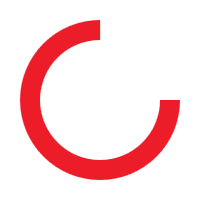
Martin Jeffries, Chief Marketing Officer at Tunstall Group welcomes the new functionality of the recently launched Apple Watch Series 4.
Oct 11, 2018
The next generation of Apple smart watch [https://www.techradar.com/uk/reviews/apple-watch-4-review], which offers a fall detection app and heart monitoring, was unveiled earlier this year.
Since its introduction the Apple Watch has always enabled users to choose from a range of apps to help them manage their health and wellbeing, such as measuring heart rate, counting steps taken and monitoring weight. However, the latest generation is now classed as a medical device, with approval from the USA’s Food and Drug Administration (FDA), clearly demonstrating Apple’s desire to move further into the healthcare space.
The latest Apple Watch features a low heart rate alert, heart rhythm detection and will soon include a personal electrocardiogram (ECG) monitor. In addition, the FallSafety Pro app can detect if the wearer has fallen and automatically notify emergency contacts or the emergency services if the user doesn’t dismiss the countdown on the screen.
There are obvious similarities between these features and some of the solutions in Tunstall’s portfolio, such as the myMobile Connected Health app [myMobile services link] and our range of fall detectors. However, one of the main differences will be the users; Tunstall largely supports older people with long-term health and/or care needs, but we envisage that the Apple Watch will appeal to a younger demographic, protecting them in the event of an accidental trip, a fall from a ladder or even a diabetic hypo.
Tunstall offers a more holistic solution to fall monitoring and management. By using telecare, the risk of falls can be managed by a bed occupancy sensor, PIR movement detector and bodily worn fall detector used in combination [Link to products], any of which can raise an alert at the specialist monitoring centre, where a trained and experienced operator will assess the situation and take appropriate action, such as contacting a relative or calling an ambulance. Thus calls are effectively triaged, helping the right care to be delivered at the right time, avoiding unnecessary ambulance call outs.
Our increasing desire to manage our own health is demonstrated by the continuing growth of the wearables market, which according to industry analyst CCS Insight is set to grow by an average of 20 per cent each year over the next five years to become a $29 billion market worldwide, largely down to sales of smart watches [https://www.forbes.com/sites/paullamkin/2018/02/22/smartwatch-popularity-booms-with-fitness-trackers-on-the-slide/#2a41fc1b7d96]. With the introduction of fall detection, Apple is expanding the use of what we recognise as telecare beyond the older demographic, introducing long-term support before greater need occurs, and helping to create a generation of digital natives who will view monitoring their own health and care using technology as part of everyday life.
Our continuing love affair with digital is also demonstrated by the significant growth in the market for connected/smart home products in recent years, enabling us to control our energy, security, lighting and home entertainment. This, along with smart speakers, has created a new range of devices that haven’t been designed specifically with older or disabled people in mind, but which offer great benefit when used in this way.
Apple’s inclusion of fall detection in its portfolio will do much to raise awareness of the benefits of using technology to manage the risk of falls, including to those whose needs may ultimately be better suited to more traditional/specialised telecare devices. It offers consumers more choice, and helps to combat the view that smart home technologies and wearables are technology looking for a problem; when properly integrated, health and care are the perfect rebuttal to this accusation.
Over time we may see technology like the Apple Watch and Tunstall’s solutions converge; it is certainly Tunstall’s strategy to utilise best of breed technology to offer its customers a more complete service.
Designing capability into today’s devices for tomorrow’s older generation is a smart idea, fostering inclusion, encouraging independence and enabling self-care, easing demand for our beleaguered health and care systems. We believe wearable tech can help keep the doctor away.
To see more information about Tunstall’s fall detect monitoring and management solutions visit take a look at our iVi and Vibby fall detectors, and download a data sheet for more details.